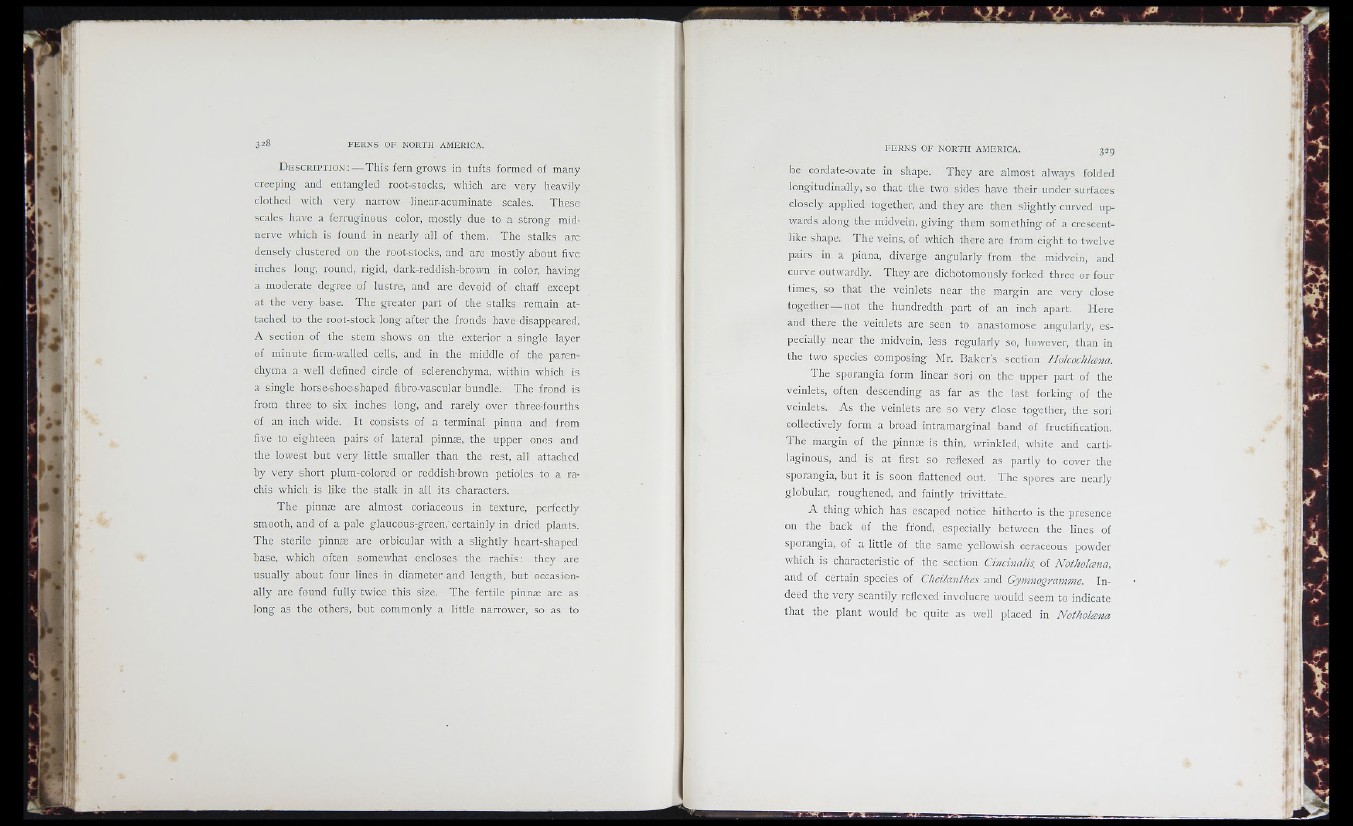
I i !
D e s c r i p t i o n : — This fern grows in tufts formed of many
creeping and entangled root-stocks, which are very heavily
clothed with very narrow linear-acuminate scales. These
scales have a ferruginous color, mostly due to a strong mid-
nerve which is found in nearly all of them. The stalks are
densely clustered on the root-stocks, and are mostly about five
inches long, round, rigid, dark-reddish-brown in color, having
a moderate degree of lustre, and are devoid of chaff except
at the very base. The greater part of the stalks remain attached
to the root-stock long after the fronds have disappeared.
A section of the stem shows on the exterior a single layer
of minute firm-walled cells, and in the middle of the parenchyma
a well defined circle of sclerenchyma, within which is
a single horse-shoe-shapcd fibro-vascular bundle. The frond is
from three to six inches long, and rarely over three-fourths
of an inch wide. It consists of a terminal pinna and from
five to eighteen pairs of lateral pinnæ, the upper ones and
the lowest but very little smaller than the rest, all attached
by very short plum-colored or reddish-brown petioles to a rachis
which is like the stalk in all its characters.
The pinnæ are almost coriaceous in texture, perfectly
smooth, and of a pale glaucous-green,'certainly in dried plants.
The sterile pinnæ are orbicular with a slightly heart-shaped
base, which often somewhat encloses the rachis: they are
usually about four lines in diameter and length, but occasionally
are found fully twice this size. The fertile pinnæ are as
long as the others, but commonly a little narrower, so as to
be cordate-ovate in shape. They are almost always folded
longitudinally, so that the two sides have their under surfaces
closely applied together, and they are then slightly curved upwards
along the midvein, giving them something of a crescentlike
shape. The veins, of which there are from eight to twelve
pairs in a pinna, diverge angularly from the midvein, and
curve outwardly. They are dichotomously forked three or four
times, so that the veinlets near the margin are very close
together— not the hundredth part of an inch apart. Here
and there the veinlets are seen to anastomose angularly, especially
near the midvein, less regularly so, however, than in
the two species composing Mr. Baker’s section Holcochloena.
The sporangia form linear sori on the upper part of the
veinlets, often descending as far as the last forking of the
veinlets. As the veinlets are so very close together, the sori
collectively form a broad intramarginal band of fructification.
The margin of the pinnæ is thin, wrinkled, white and cartilaginous,
and is at first so reflexed as partly to cover the
sporangia, but it is soon flattened out. The spores are nearly
globular, roughened, and faintly trivittate.
A thing which has escaped notice hitherto is the presence
on the back of the frond, especially between the lines of
sporangia, of a little of the same yellowish ceraceous powder
which is characteristic of the section Cincinalis, of Notholcena,
and of certain species of Cheilanthes and Gymnogramme. Indeed
the very scantily reflexed involucre would seem to indicate
that the plant would be quite as well placed in Notholcena